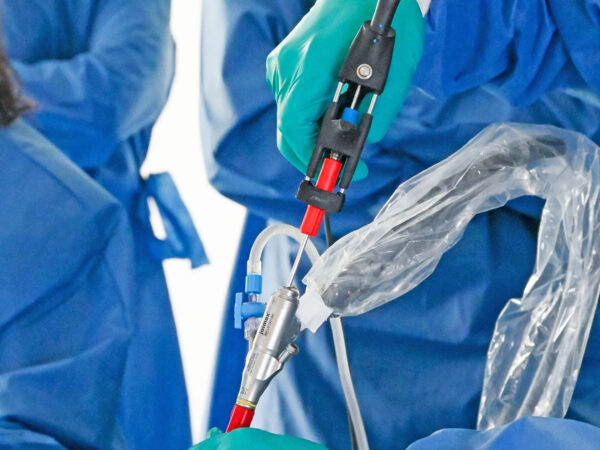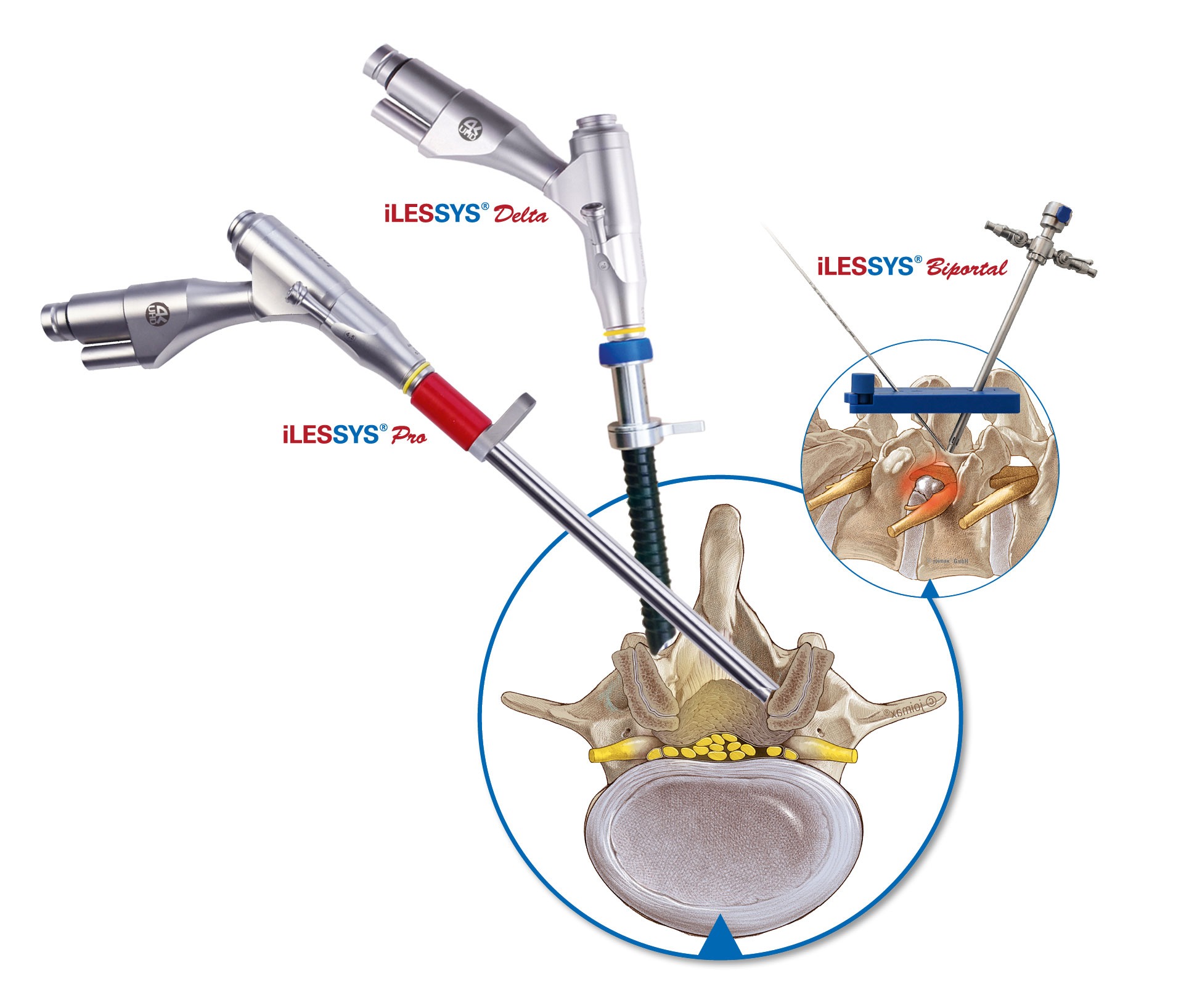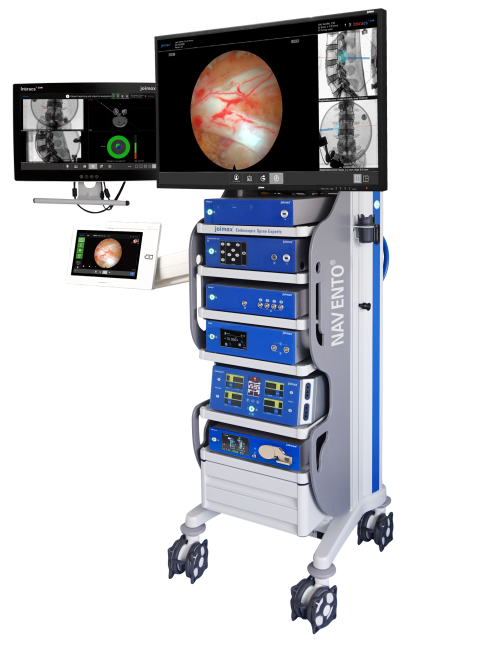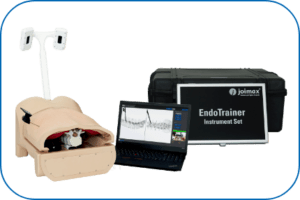Interlaminar Decompression & Deherniation
Herniated discs and spinal stenoses are widespread health concerns. Endoscopic spinal surgery has become an alternative and reliable treatment method for a variety of spinal conditions.
A real alternative to conservative surgical techniques
Endoscopic spine surgery is intended as an ultra minimally invasive surgical technique to treat disc herniations and spinal stenoses. It has developed as an alternative to open or tubular techniques and has been very fast advancing in the last 20 years. Today endoscopic spine surgery surpasses other options such as open and micro surgical procedures in treating spine pathologies in many ways!1
The interlaminar endoscopic lumbar discectomy is a favorable option for patients with high-grade disc migration, preferably for L4/L5 and L5/S12. For posterior decompression without disc resection the interlaminar approach allows controlled resection3, shows less risk of injury to the exiting nerve root and may be applied comfortably even for less experienced surgeons4. Several studies demonstrate the effectiveness and safety of the minimally invasive surgical technique5 and highly confirm successful outcomes characterized by effective reduction in symptoms, minimal blood loss as well as short
hospital stays6.
Interlaminar endoscopic access
The iLESSYS® method – with safe access through the interlaminar window – has proven to be a particularly patient-friendly procedure showing little complications.
Compared to open or microscopic techniques, only minimal soft tissue disruption is necessary due to the small diameter of the joimax® Laminoscopes®. During the entire procedure, high quality optics and constant irrigation ensure an excellent view by continuously removing debris and bleeding from the surgical site.
Selected indications for the interlaminar method (iLESSYS®)
• Dorsal and lateral disc herniations
• Spinal stenoses (central, lateral recess, foraminal entry zone
• Hypertrophic ligamentum flavum
• Facet joint cysts
• Assisted interlaminar fusion
Disclaimers
Certain products may not be approved for sale in all countries.
Bibliography
- Muthu, Sathish et al. “Is Endoscopic Discectomy the Next Gold Standard in the Management of Lumbar Disc Disease? Systematic Review and Superiority Analysis.” Global spine journal vol. 11,7 (2021): 1104-1120. doi:10.1177/2192568220948814.
- Wu, Christopher et al. “Functional outcomes of full-endoscopic spine surgery for high-grade migrated lumbar disc herniation: a prospective registry-based cohort study with more than 5 years of follow-up.” BMC musculoskeletal disorders vol. 22,1 58. 9 (2021): doi:10.1186/s12891-020-03891-1.
- Hofstetter, Christoph P et al. “AOSpine Consensus Paper on Nomenclature for Working-Channel Endoscopic Spinal Procedures.” Global spine journal vol. 10,2 Suppl (2020): 111S-121S. doi:10.1177/2192568219887364.
- Huang, Kelun et al. “Early Clinical Outcomes of Percutaneous Endoscopic Lumbar Discectomy for L4-5 Highly Down-Migrated Disc Herniation: Interlaminar Approach Versus Transforaminal Approach.” World neurosurgery vol. 146 (2021): e413-e418. doi:10.1016/j.wneu.2020.10.105.
- Hasan, Saqib et al. “The benefit zone of full-endoscopic spine surgery.” Journal of spine surgery (Hong Kong) vol. 5,Suppl 1 (2019): S41-S56. doi:10.21037/jss.2019.04.19.
- Shen, Jian et al. “Full endoscopic cervical spine surgery.” Journal of spine surgery (Hong Kong) vol. 6,2 (2020): 383-390. doi:10.21037/jss.2019.10.15.
NAVENTO® Knows No Boundaries!
NAVENTO® – The fully integrated, new generation endoscopic navigation tower for the whole range of applications. It offers the complete package with latest technology and coordinated functionalities of all devices.
This enables the user to master endoscopic spinal surgery in all its diversity and offers growth potential for the expansion of skills and indications.
NAVENTO® knows no boundaries!
EndoTrainer® Plus
With the joimax® EndoTrainer® Plus, the transforaminal and the interlaminar surgical techniques can be trained directly at your hospital site.





